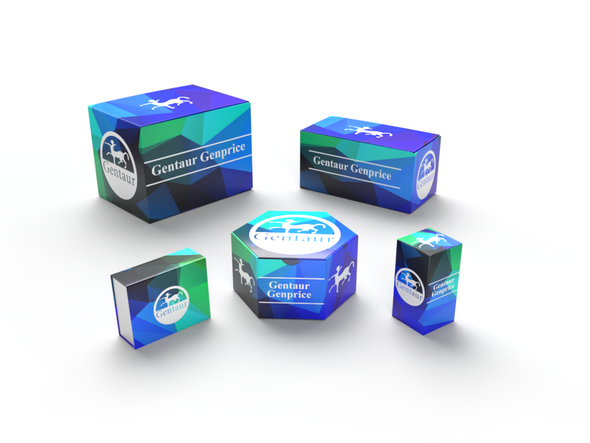740
Human Syntaxin-1A (STX1A) ELISA Kit | AE15773HU
- SKU:
- 740-AE15773HU
- Availability:
- Usually ships in 5 working days
Description
Human Syntaxin-1A (STX1A) ELISA Kit | AE15773HU | Gentaur UK, US & Europe Distribution
Species Reactivity: Human (Homo sapiens)
Abbreviation: STX1A
Alternative Name: HPC-1; STX1; p35-1; syntaxin 1A
Application: ELISA
Range: 0.156-10 ng/mL
Sensitivity: 0.057 ng/mL
Intra-Assay: ≤4.9%
Inter-Assay: ≤9.8%
Recovery: 1, 03
Sample Type: Serum, Plasma, Other biological fluids
Detection Method: Sandwich
Analysis Method : Quantitive
Test Principale: This assay employs a two-site sandwich ELISA to quantitate STX1A in samples. An antibody specific for STX1A has been pre-coated onto a microplate. Standards and samples are pipetted into the wells and anySTX1A present is bound by the immobilized antibody. After removing any unbound substances, a biotin-conjugated antibody specific for STX1A is added to the wells. After washing, Streptavidin conjugated Horseradish Peroxidase (HRP) is added to the wells. Following a wash to remove any unbound avidin-enzyme reagent, a substrate solution is added to the wells and color develops in proportion to the amount of STX1A bound in the initial step. The color development is stopped and the intensity of the color is measured.
Product Overview: Syntaxin-1A is a protein encoded by the STX1A gene.Synaptic vesicles store neurotransmitters that are released during calcium-regulated exocytosis. The specificity of neurotransmitter release requires the localization of both synaptic vesicles and calcium channels to the presynaptic active zone. Syntaxins function in this vesicle fusion process. Syntaxins also serve as a substrate for botulinum neurotoxin type C, a metalloprotease that blocks exocytosis and has high affinity for a molecular complex that includes the alpha-latrotoxin receptor which produces explosive exocytosis .Alternatively spliced transcript variants encoding different isoforms have been found for this gene.
Stability: The stability of ELISA kit is determined by the loss rate of activity. The loss rate of this kit is less than 5% within the expiration date under appropriate storage condition. The loss rate was determined by accelerated thermal degradation test. Keep the kit at 37°C for 4 and 7 days, and compare O.D.values of the kit kept at 37°C with that of at recommended temperature. (referring from China Biological Products Standard, which was calculated by the Arrhenius equation. For ELISA kit, 4 days storage at 37°C can be considered as 6 months at 2 - 8°C, which means 7 days at 37°C equaling 12 months at 2 - 8°C) .










